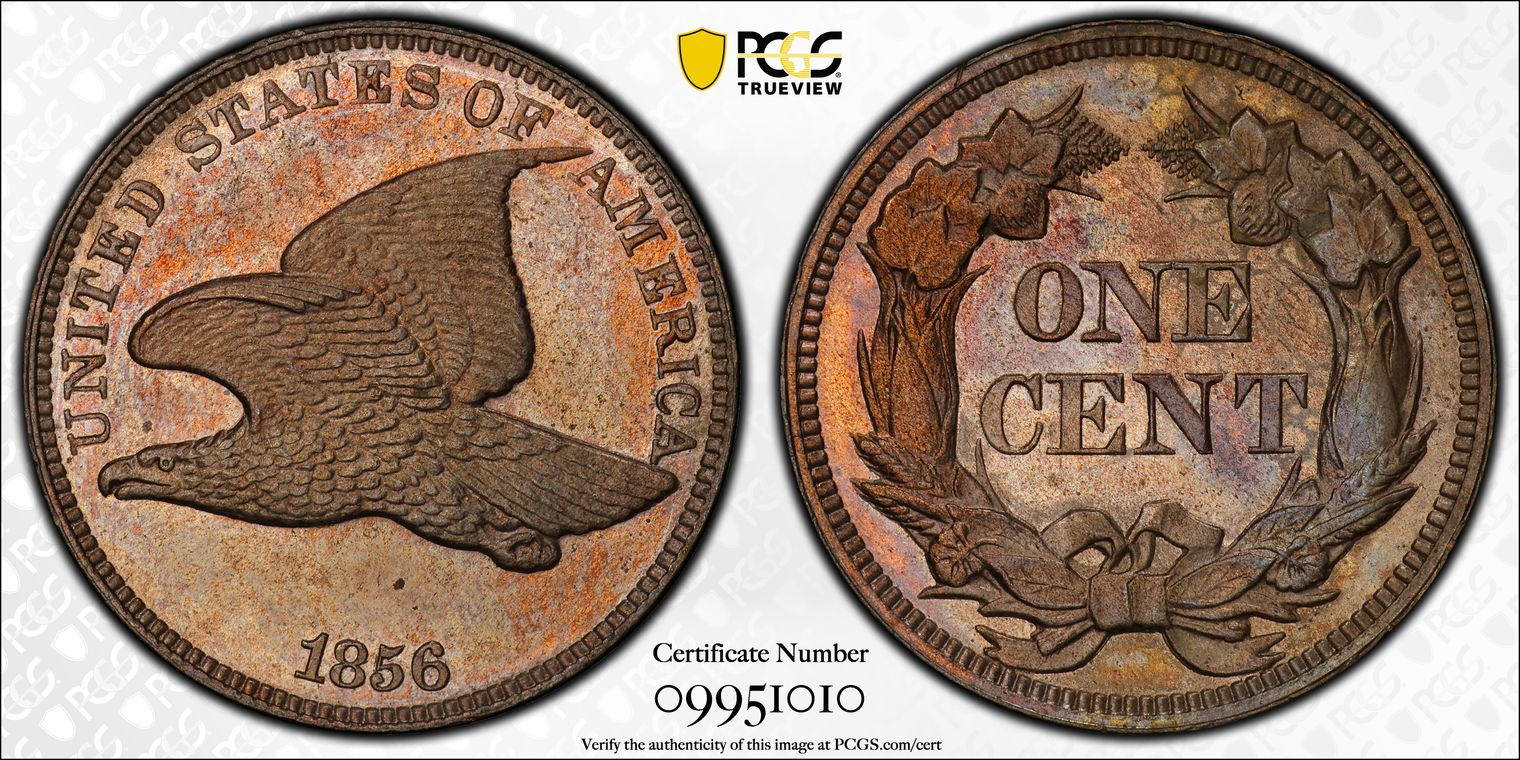1856 1C Flying Eagle S-3 MS65 认证号09951010, PCGS号391479
拥有者评论
1856 1C MS65 PCGS. CAC Certified, Snow-3. Die Stage A. Ex: Joshua and Ally Walsh. The obverse die of this variety is easily identifiable by repunching on the 5 in the date. This die was also used to strike coins of the Snow-1 and Snow-10 varieties. The most evident reverse diagnostics are the high leaves at the C and T in CENT. This reverse die was also used to strike Snow-8. According to Snow (2001), examples of Snow-3 are the second most frequently encountered 1856 Flying Eagle cents in today's market. This die pair was used from 1856 through early 1857. The first coins produced were copper die trial pieces (Judd-281, Pollock-213), of which only two examples are accounted for today. The Mint then struck 634-800 business strike 1856 Flying Eagle cents of the Snow-3 die marriage using copper-nickel planchets. Snow asserts that these coins were prepared for two purposes: to test the press and dies in a simulated business strike run, and to provide examples of the proposed copper-nickel cent to members of Congress.
The first copper-nickel examples of Snow-3 that emerged from the dies are prooflike in finish with moderately reflective mirrors in the fields. These coins are known as Die Stage A, and they can be easily mistaken for proofs by collectors who are not aware of the other diagnostics for Snow-3. All examples of this variety lack the completeness of strike that proof 1856 Flying Eagle cents display. The present coin, while certainly sharp in overall detail, exhibits a little softness of strike over the eagle's breast feathers. In addition, the reverse devices, particularly the cotton leaves in the wreath, have rounded edges. As befits the die stage, this coin displays moderately reflective fields. The color is a warm, original, honey-gold shade with swirls of medium tan and lilac patina here and there. Both sides are free of bothersome handling marks, although a tiny carbon fleck in the obverse field above the date is noted. Truly, truly, a remarkable gem!
专家评论
Jaime Hernandez
By 1854, the Mint was spending more money to produce the Large cent coin than its actual face value.Alternatively, the Mint began experimenting by producing 1854, 1855 and 1856 pattern cents, (View Coin # 11674, 11709 and 11792). The Mint also produced several varieties for 1856 Flying Eagle cents. One of the most desirable varieties is the Snow-3 variety.
The 1856 Flying Eagle cent with the Snow-3 variety, is believed to be the first coins that were originally struck and handed out to government officials. This variety can be distinguished because of the repunched 5 on the date.
Ron Guth
According to Rick Snow, noted Flying Eagle and Indian Head Cent expert, "One of the main points that show that the Snow-3 is a business strike is that many show strike-doubling. You will find that this happens on the steam press, but not on the screw press that the Proofs were struck on. Many of the Proofs are terribly made, granted, but a high Proof mintage (1500 - S9's) will have quality issues."
PCGS #
391479
设计师
James Barton Longacre
边缘
Plain
直径
19.00 毫米
重量
4.70 克
铸币数量
634
金属成分
88% Copper, 12% Nickel
更高评级数量
0
评级较低的钱币数量
11
地区
The United States of America
价格指南
PCGS 数量报告
拍卖 - PCGS 评级的
拍卖 - NGC 评级的























